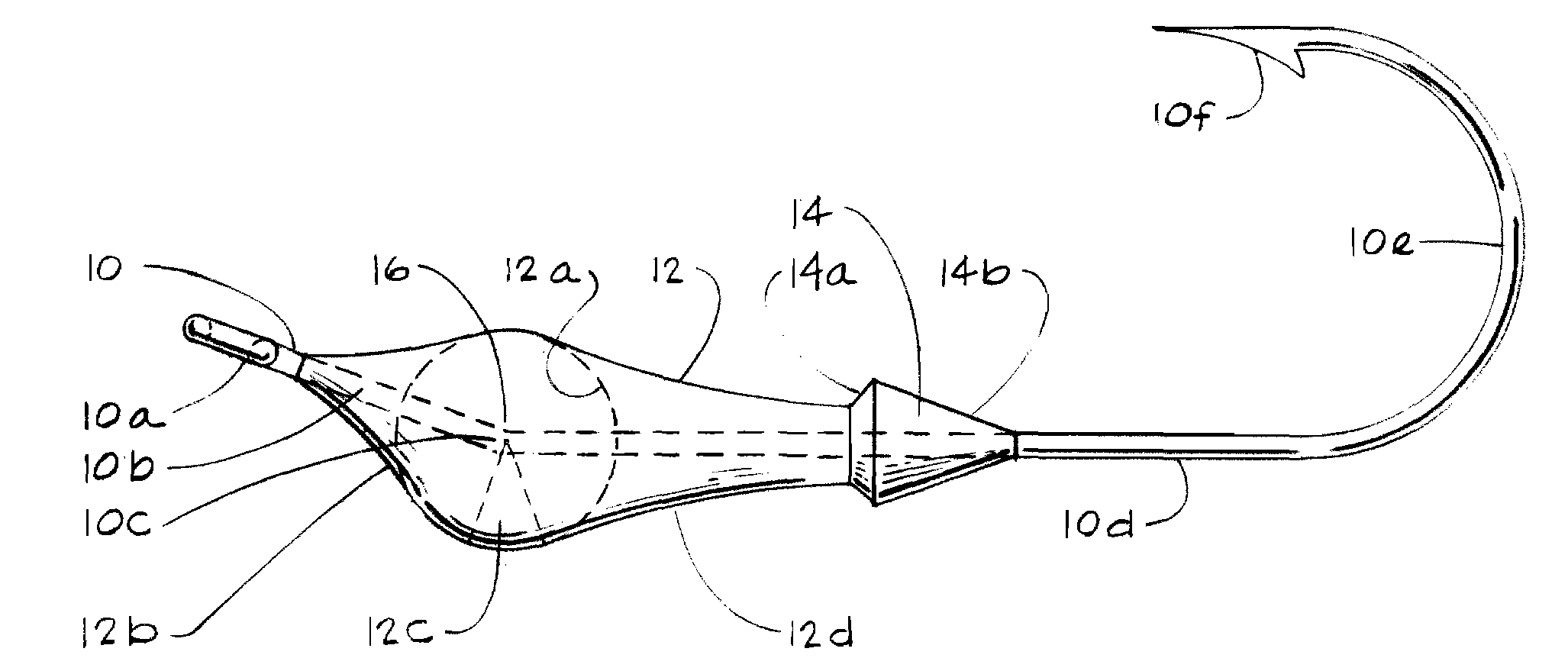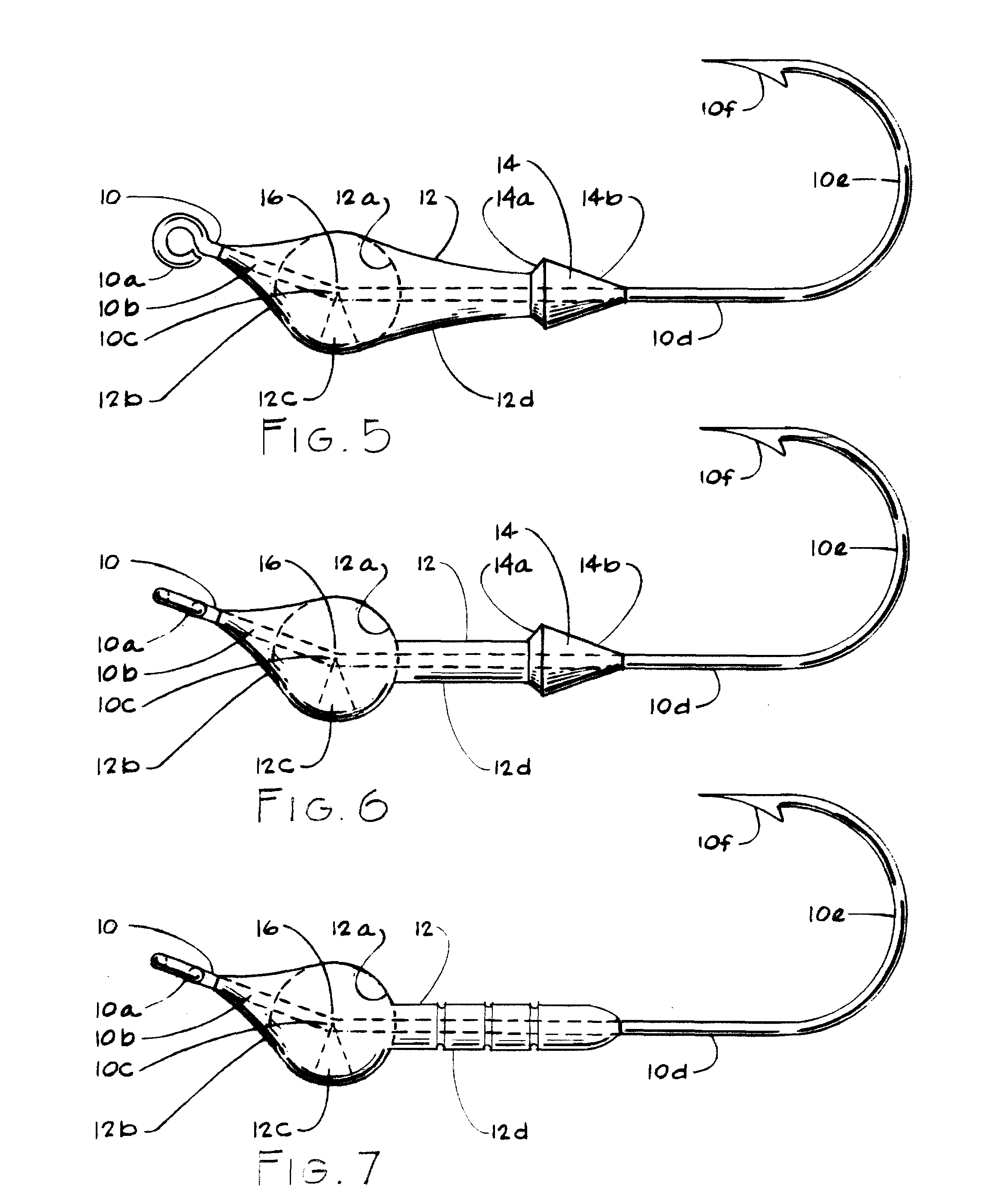Streamlined Counterbalanced Fishing Jig
- Summary
- Abstract
- Description
- Claims
- Application Information
AI Technical Summary
Benefits of technology
Problems solved by technology
Method used
Image
Examples
Embodiment Construction
LIST OF DRAWING REFERENCE NUMBERS 8Fishing jig10hook10ahook eye10beye bend10ceye bend radius point10dhook shank10ehook curve10fhook point12metal body12aspherical body mass12bfrontal area (concaved)12ccounterbalancing weight wedge12dshank collar (concaved)14bait collar14abait collar rim14bconical portion of the bait collar16center of gravity
[0046]A preferred embodiment of the fishing jig 8 is illustrated in FIGS. 1-4 and shows a fish hook 10 with a metal body 12 cast about the hook 10. The hook 10 is a light Aberdeen ringed hook with an eye 10a adapted to be attached to a fishing line, and a short section attached to the eye 10a and referred to as the eye bend 10b. The eye bend 10b is bent towards the hook point 10f of a hook curve 10e at an angle of approximately 20° to a straight hook shank 10d. The eye 10a forms a leading extremity of the jig 8, while the hook curve 10e forms a trailing extremity. The hook point 10f may be barbed or barbless. An eye bend radius point 10c is locate...
PUM
 Login to View More
Login to View More Abstract
Description
Claims
Application Information
 Login to View More
Login to View More - R&D
- Intellectual Property
- Life Sciences
- Materials
- Tech Scout
- Unparalleled Data Quality
- Higher Quality Content
- 60% Fewer Hallucinations
Browse by: Latest US Patents, China's latest patents, Technical Efficacy Thesaurus, Application Domain, Technology Topic, Popular Technical Reports.
© 2025 PatSnap. All rights reserved.Legal|Privacy policy|Modern Slavery Act Transparency Statement|Sitemap|About US| Contact US: help@patsnap.com



